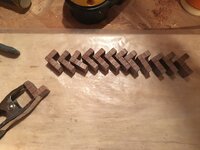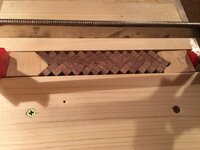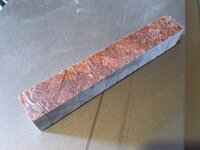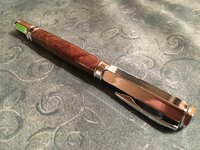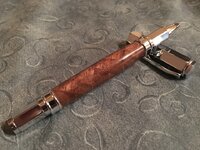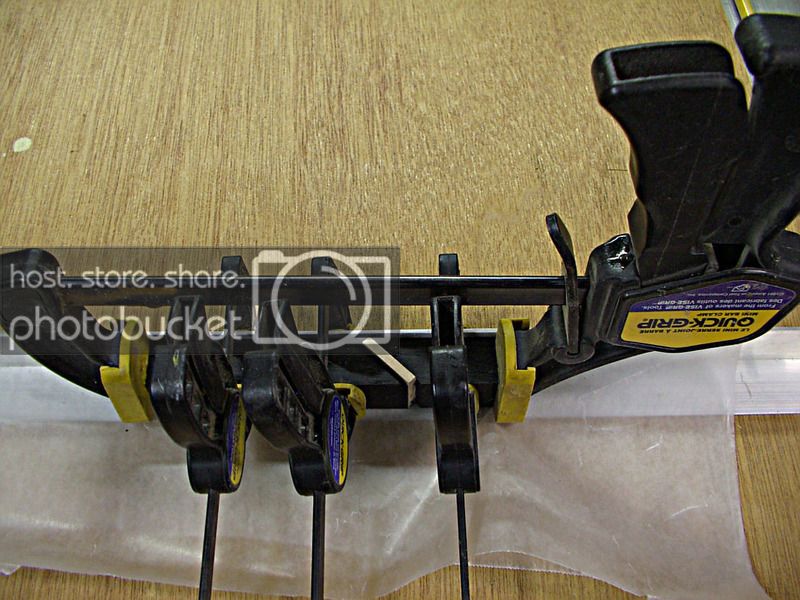I picked up some aluminum angle from a local hardware and lumberyard ... had some leftover cedar from a fencing project that is still in the works, and wanted to try out segmenting for the first time ...
I realize that going straight to a project like this is akin to jumping off the deep end, and I'll admit freely that of the four blanks and 18 tubes of superglue that I used for this project, only ONE blank survived the drilling and turning to completion. That having been said, I needed a second blank for the cap, and my best option at the time was to turn that from some locally grown Mesquite (either Northern Texas Mesquite or Honey Mesquite ... I'm not sure).
The result is pictured below, and is now owned by Brian G, my 2016 PITH partner from October. I'ld have shown it here earlier, but I didn't want to ruin the surprise for him.

As in my previous post, waxing the aluminum angle with some candle wax was key, in getting the segments squared up at 90 degrees and not sticking to the aluminum. I also used a lot of tiny little spring clamps to secure the segments as the CA cured.
I used only Western Redwood Cedar for the lower barrel ... the lighter looking wood came from one half of the board, and I interleaved the lighter and darker segments for the resulting pattern.
I used my band saw to roughly square off the ends of the blanks, and trued them up on my sander before I took them to the lathe for drilling. The first blank I tried to trill with a brad point bit ..... it shattered. The second, I pre-drilled with an acrylic bullet point bit that was undersized, and then came back with the correct size in a standard twist bit .... the entry hole became ragged and it was ruined. The third, I drilled with the correct size standard twist bit, and it came out acceptably well (pictured above). The fourth, I drilled with the same bit... which is the wrong size for the cap

... and the only correctly sized bit I have for the cap is a brad point bit!
Oh well, at least I know what I need if I want to tackle a project like this again!

